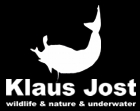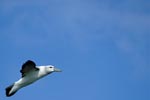|

 de /
en de /
en 
Apps (iPhone, iPad & iPod):
 great white shark great white shark
 sharks sharks
 seabirds seabirds
Science - Fiji Shark Project
Scientific shark articles
Alaska & Wildlife
Arctis
Birds
Cities
Egypt - Land of the Nile
Fauna & Flora Fiji
Fiji sharkproject
Mountains
Nature
Penguins & seals
Polar bear
Sea
Seabirds
African black oystercatcher
Bank cormorant
Black-browed albatross
Blackfooted albatross
Brown bobby
Brown noody
Cape cannet
Cape cormorant
Great frigatebird
Hartlaub's gull
Kelb gull
Laysan albatross
Masked booby
Red-footed booby
Red-tailed tropicbird
Sooty tern
Subantarctic skua
Swift tern
White chinned petrel
White tern
Wilson's storm petrel
Sharks
Southern Right Whale
Underwater
Wildlife South Africa


|
Photos of the Black-browed Albatross (Diomedea melanophris) on the open sea, of the coast of south Africa.
The Black-browed Albatross (Diomedea melaophris) is one of the smallest of the 14 albatross species. The birds are offshore inhabitants and often they fly thousands of kilometres above the sea without touching the ground. With their narrow and extremely long wings they glide over the ocean for hours without a flap of wings. Albatrosses spend 90 percent of their lives in the air. They are flying artists and storm is their element. In gales and with towering waves they feel very well. Albatrosses circle the entire Antarctic, returning to the islands off the coast only for breeding. Almost all albatross species nest in colonies, often in several thousands. After four months the young birds are fledged and leave the land. They stay above the open sea for almost four years before they return. Black-browed Albatrosses are interested in everything that floats on the water surface. They feed on fish, octopus and cancers, but their primary food is Krill. Albatrosses often follow boats, especially fish trawlers. They are especially endangered by longlines. Many albatrosses as well as other sea birds die from the hooks of the long-line fishery. There are lines with a length of more than 100 kilometres with more than 20,000 hooks to which the fish baits are attached. As soon as the lines are let down from the boat into the water, the birds try to catch the easy prey. Often they get caught in the hooks and drown as soon as the line falls down through their weight. Longlines have disastrous consequences in every aspect, leaving behind a desert landscape in the sea.
|
![]() great white shark
great white shark![]() sharks
sharks![]() seabirds
seabirds


